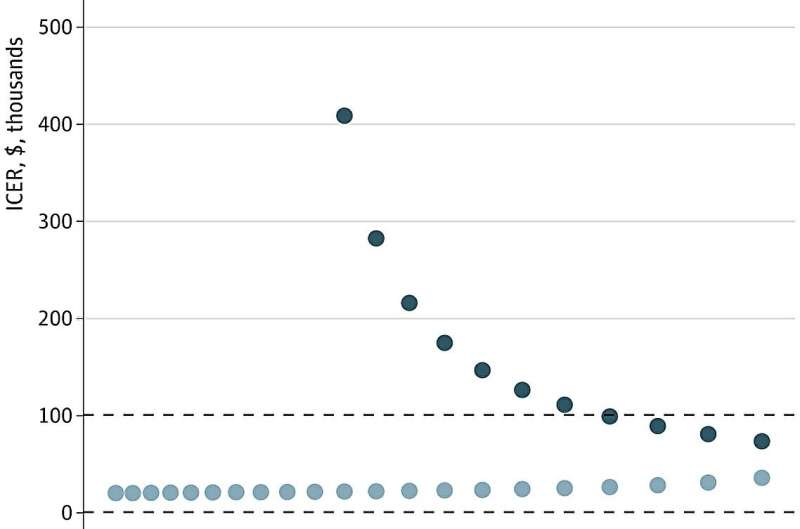This article has been reviewed according to Science X's editorial process and policies. Editors have highlighted the following attributes while ensuring the content's credibility:
fact-checked
peer-reviewed publication
trusted source
proofread
Use of injectable extended-release buprenorphine limited by cost and treatment retention, finds study

Injectable, extended-release buprenorphine can be an effective option for people seeking treatment for opioid use disorder, but cost and treatment retention are still barriers for patients unless there are significant changes, new research from Boston Medical Center has found.
The study, published in JAMA Network Open, concludes that oral buprenorphine may be more cost-effective and have a higher rate of treatment retention, but the opioid overdose crisis requires a broad menu of effective treatments, including injectable formulations, to address the diverse needs of all patients.
The United States recorded over 83,000 opioid-related overdose deaths in the 12-month period ending in 2022. Medications for opioid use disorder (MOUD) are evidence-based treatments for opioid use disorder and are critical tools to reduce overdose death. People receiving MOUD are also more likely to remain engaged in care and have improved quality of life.
While MOUD are highly effective, many eligible people are not receiving them. Barriers to care include the limited number of prescribers, restrictions on methadone care, stigma, and financial accessibility. Although access to and uptake of MOUD has risen in recent years, the increase has not been substantial enough to reverse the trajectory of opioid overdose-related deaths amidst the rise in synthetic opioids such as fentanyl.
Previous studies show that extended-release buprenorphine has the potential to be a helpful addition to existing forms of medications for opioid use disorder. Injectable drug formulations include a steady and consistent dose of medication and the reduced burden of daily medication.
Extended-release buprenorphine may contribute to a decrease in stigma that is associated with daily dosing of medication and may be particularly useful for populations at elevated risk for overdose fatalities, including opioid overdose survivors.
"Given the ongoing nationwide opioid overdose crisis, we need a variety of options in our toolbox of available treatments for patients with opioid use disorder. Extended-release buprenorphine provides an additional option that might meet the needs of some patients," said senior author Sabrina Assoumou, MD, MPH, an infectious diseases doctor at Boston Medical Center and the Louis W. Sullivan, MD, Endowed Professor of Medicine and Associate Professor of Medicine at Boston University Chobanian & Avedisian School of Medicine.
"Future initiatives should focus on important factors that we have identified in our study, namely improving retention rates on treatment and lowering drug cost."
Researchers performed an economic evaluation using computer simulation modeling to determine the cost-effectiveness of injectable extended-release buprenorphine for the treatment of opioid use disorder. They specifically explored under which conditions extended-release buprenorphine would not provide a good value for money given its known limitations, namely a higher monthly cost and lower retention rate on treatment for early adopters of this medication.
The computer simulation model included a closed cohort of individuals with opioid use disorder, presenting for evaluation for opioid agonist treatment with buprenorphine. Researchers then conducted a series of sensitivity analyses to evaluate the effects of uncertainty around model parameters.
Researchers believe that given the urgency of the opioid overdose-related deaths, it would be useful for patients, clinicians and policymakers to know the relative cost-effectiveness of the choices in the MOUD treatment toolkit. In addition, recent changes to requirements for prescribing buprenorphine make the current analysis even timelier.
This study might be helpful to policymakers as researchers identify important thresholds of drug cost and retention rates that might make extended-release buprenorphine a good value for money.
The study shows that substantial changes in cost and retention would be necessary and future initiatives should focus on intervention aimed at enhancing retention on treatment and lowering drug costs.
More information: Juliet M. Flam-Ross et al, Economic Evaluation of Extended-Release Buprenorphine for Persons With Opioid Use Disorder, JAMA Network Open (2023). DOI: 10.1001/jamanetworkopen.2023.29583




















